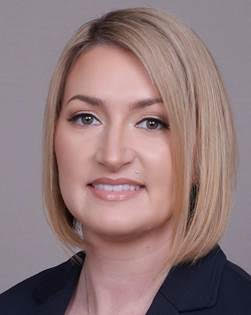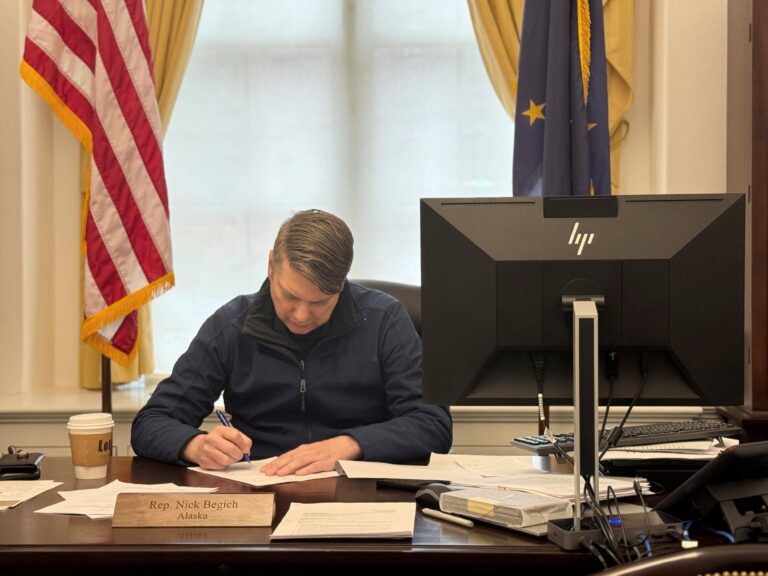By KASSIE ANDREWS
When Alaska, a state synonymous with rugged independence and self-reliance, began aligning with the United Nations Sustainable Development Goals (SDGs), it may have been seen as a step toward modernizing and protecting its natural beauty.
However, the unintended consequences of adhering to this globalist construct have left many local communities grappling with the fallout. From an exploding homeless population to rising energy costs and diminished economic opportunities, the promises of the SDGs have often clashed with the realities of life in America’s Last Frontier.
To understand how these things have wreaked havoc on Alaska, brief summaries are provided to illustrate the direct connection between SDGs and state policies.
The UN’s 17 SDGs are nothing more than the latest iteration of a long-standing agenda to impose centralized control under the guise of “sustainability.” Rebranded roughly every 15 years —Agenda 21, the Millennium Development Goals, now Agenda 2030—this construct repackages the same regulations whenever public skepticism grows. Sold as virtuous and noble, the SDGs are, in reality, a vehicle for global governance, economic manipulation, and land control. Compliance is enforced through corporate complicity, ESG mandates, the Paris Agreement, and digital surveillance, all while masquerading as progress.
Homelessness: A Crisis Out of Control
SDG 1, which claims to “end poverty in all its forms everywhere,” beginning as early as 2005, housing first policies were introduced to address homelessness in Anchorage, Alaska. These seemingly well-meaning initiatives have had the complete opposite effect. Anchorage has seen its homeless population explode in recent years, partially due to lenient plans that prioritize “equity” over accountability. Programs are designed to house the homeless without addressing underlying issues.
The Housing First model, long championed as a solution under UN SDG-aligned policies, guarantees housing without requiring sobriety or participation in recovery programs. Intended to provide stability, this approach has created communities where substance abuse flourishes, straining law enforcement and social services. The Anchorage Assembly appears to be following the UN plan, down to using the same language—to “solve homelessness“—no matter the cost to taxpayers.
A Judicial System Hijacked by Social Justice
SDG 16, which promotes “peace, justice, and strong institutions,” has brought about troubling changes to Alaska’s judicial system. What was once a system focused on fairness and enforcing the rule of law has increasingly pivoted toward social justice initiatives. The “pursuit of social justice for all is at the core of the United Nations’ mission to promote development and human dignity.”
In 2016, Alaska’s court system secured a Justice for All grant from the Public Welfare Foundation. Framed as justice reform, the initiative was structured into three key phases, including redefining justice, mapping the justice ecosystem, and analyzing provider relationships, further embedding bureaucratic control. The Alaska Court System’s “Justice for All Project” prominently features the UN SDGs, serving as a stark reminder of who truly drives these decisions.
A glaring example of the social justice takeover was in 2020 when Alaska’s Supreme Court penned letters after the death of George Floyd. The statement acknowledged systemic inequities in the treatment of African-Americans, Alaska Natives, and other people of color, highlighting that these groups often face disparities in dignity and respect as compared to white community members.
The momentum has increased toward crippling the ability of officers to respond to violent suspects and drug addicts within the homeless population. The United Nations wants reform of “police and criminal justice systems in the United States to eradicate systemic racism.” To this end, a bill to ban the use of chokeholds has been introduced multiple times by Alaska State Sen. Elvi Gray-Jackson.
The push for social justice in our legal system is failing victims. Reduced sentencing and rehabilitation-focused programs may sound admirable, but they create a revolving door for repeat offenders. Meanwhile, law enforcement is hamstrung by policies that prioritize offender outcomes over public safety. Justice shouldn’t feel this unjust.
Vision Zero Collides with Alaska Transportation
First adopted in Sweden in 1997, Vision Zero is a global initiative to eliminate traffic fatalities and serious injuries, tied closely to multiple SDGs. Its focus on safety and sustainability aligns with SDG 3 (Good Health and Well-Being) to reduce road-related deaths and injuries. It complements SDG 9 (Industry, Innovation, and Infrastructure) through investments in safer transportation infrastructure and technology. SDG 11 (Sustainable Cities and Communities) is another cornerstone, as Vision Zero promotes accessible urban designs, while SDG 13 (Climate Action) is supported by its non-motorized and public transportation to reduce greenhouse gas emissions.
In Alaska, federal dollars are dangled over the state to implement Vision Zero and carbon reduction into the transportation infrastructure. Vision Zero appears in the Mat-Su Safe Streets for All (SS4A) initiative, which aims to improve transportation safety and accessibility. The plan prioritizes “vulnerable road users” like pedestrians and cyclists. Funded through Justice40, a social equity and environmental justice initiative, mandating that 40 percent of benefits go to disadvantaged communities, shifting focus from broad public needs.
Another example of Alaska’s adoption of this initiative appears in a press release from the state announcing that they will set up a “Vision Zero Taskforce” from an issue that was created by the Anchorage Municipality in the name of equity.
In August of 2023, the Anchorage Assembly revised the law decriminalizing jaywalking by removing fines. The ordinance was to “promote safety, equity and access infrastructure for bicyclists and other vulnerable road users.” Shockingly, the pedestrian fatalities skyrocketed to double the number from the previous year. The UN’s Carbon Reduction Program (CRP) targets personal travel. This transportation program Alaska signed onto enables the state to receive massive amounts of taxpayer dollars to reduce carbon emissions. The plan includes verbiage to “Encourage the adoption of construction machinery running on electric or alternative fuels to reduce emissions and enhance efficiency.” For personal travel, “Shift from single-occupancy vehicle trips to mass transit” and “Promoting transit options to reduce both the number of single-occupancy vehicle trips and the total vehicle miles traveled . . . and integration of smart transportation technologies.”
Policies like road diets, surveillance, and reduced traffic lanes are less about sustainability and more about forcing compliance. These measures ignore Alaska’s realities, where cars and planes are essential lifelines, not luxuries.
Climate Change is Oil Reduction
Perhaps no SDG has been as controversial in Alaska as SDG 13, which calls for urgent action to combat climate change. The root of the entire global plan is grounded in arresting climate change. Climate Action has been part of the UN agenda since at least the 1970s, with the most recent agenda being climate goals created to achieve the Paris Agreement to keep global temperature rise as close as possible above pre-industrial levels.
SDG 13’s emission reduction goals strike directly at the heart of Alaska’s economy, targeting vital industries like oil, gas, and resource extraction. Globally, Alaska represents about one-tenth of one percent of all CO2 emissions (36,100 mm tons). In other words, Alaska’s contribution to global emissions equates to precisely a gnat’s fart in a hurricane.
Policies and actions that have recently been implemented in Alaska to feed the climate narrative include:
Decarbonization Goals: These include local level Municipality goals, utility co-op goals, state-level goals, and potentially disastrous mandates such as a Renewable Portfolio Standard mandating utilities bring on a certain level of renewables.
Social Cost of Carbon (SCC): This is used to assign monetary damages to carbon emissions, inflating the perceived harm while ignoring economic and societal benefits. It has been weaponized against essential energy projects, as seen in the ConocoPhillips Willow Project, where the SCC was explicitly used in an Environmental Impact Statement (EIS). The UN Department of Economic and Social Affairs Financing for Sustainable Development confirms its use, stating “a carbon tax should therefore be set at the same level everywhere.”
Carbon Management Legislation: Passed by the Alaska State Legislature in 2023 and 2024, these policies include carbon offsets and carbon sequestration. Carbon offsets are often based on unverifiable metrics and are notoriously rife with double-counting and outright fraud. Worse, carbon offset programs are increasingly about locking up land under the guise of conservation. At the time, Alaska’s Department of Resource Commissioner John Boyle boasted that the legislation “burnishes the State’s (ESG) credentials,” signaling to corporate interests that Alaska is willing to play by the ever-expanding rules for ESG compliance – regardless of the long-term consequences.
The United States joined the 30×30 initiative under President Biden’s 2021 America the Beautiful Plan. Aligned with the Kunming-Montreal Global Biodiversity Framework, this plan seeks to remove up to 30 percent of U.S. lands and waters for use by 2030. It claims to address biodiversity and climate change but prioritizes land acquisition around “carbon mitigation potential” schemes that enrich governments, corporations, and NGOs while trampling on the sovereignty and will of local and Indigenous communities.
In alignment with the 30×30 plan, nearly half of the National Petroleum Reserve-Alaska (NPR-A) had been declared off-limits to oil and gas development, alongside 28 million additional acres of federal land. The Ambler Road had also been blocked, leaving Alaska’s industries strangled by federal overreach. It should be obvious that 30×30 isn’t about saving the planet—it’s about consolidating power.
Alaska must reclaim its independence from harmful global agendas. A key step is passing legislation like Arizona’s HB 2788, which bans public funds from supporting UN Agenda 2030 and its Sustainable Development Goals (SDGs). Without funding tied to renewable energy mandates, Alaska could invest in practical hybrid energy solutions that balance environmental stewardship with energy reliability and affordability.
Within days of returning to the White House, President Donald Trump withdrew the U.S. from key UN agreements. The question remains: Will Alaska’s leaders and the GOP follow suit to protect Alaskans with a lasting commitment?
If there is an example to be learned from President Trump, it is that an executive has the power to act for the good of the people. Alaska Republican Party Chair Carmela Warfield Warfield and the Republican Party must take action to cultivate good candidates as primary challengers, mobilize local support for key policy positions, and support grassroots ballot initiatives that align with the Trump Mandate.
Governor Mike Dunleavy once stated, “When you’re dealing with resources, you’re dealing with the governor’s office, and when you’re dealing with some of the agencies that deal with the resources, you’re dealing with the governor’s office because I appointed everybody.” Well, it’s time to take that same posture to support Alaskans and not the globalist billionaires.
In addition to passing the Arizona bill, these actions would go a long way to show support to the Alaskan people:
- Release the report from the Kenai Grand Jury investigating judicial corruption- unredacted.
- Pause NGO lobbying for 90 days until a full review of the organization’s purposes can be completed to identify their connection between the UN SDGs and Alaska funding.
- Pass the Wyoming Make Carbon Dioxide Great again-no net zero bill.
- Pause funding for 90 days on the AK LNG Project and confirm compliance with Trump EO on the Green New Deal, Justice40, Paris Climate Agreement, etc.
- Eliminate the Alaska Standard from the state’s website, which blatantly promotes “How Alaska is Aligned with the Sustainable Development Goals.”
President Trump was right to remove the U.S. from the Paris Climate Agreement and eliminate the Green New Deal. Now, Alaska must do the same. The Dunleavy Administration and Republican leadership must step up—hesitation is surrender. Governor Dunleavy must use the bully pulpit and the veto pen to eliminate waste in the same manner as the President. If they fail to act now, this may be our last chance to break free from globalist overreach.
Kassie Andrews is an energy expert on Alaskan politics and resource development. A lifelong Alaskan, her career in energy has involved project management, construction, and finance.








